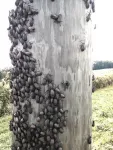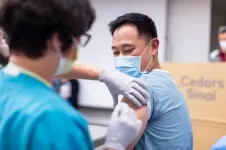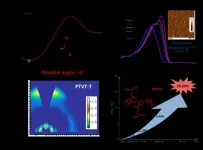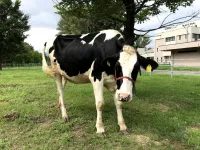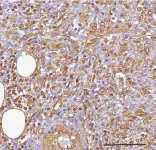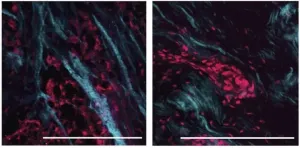(Press-News.org) People who radicalize to extremist ideologies often are triggered by negative life events or exposure to propaganda, and those who escape from extreme groups frequently are aided by an individual or group that intervenes to help them reject the philosophy, according to a new RAND Corporation study.
Expanding access to mental health care, creating opportunities for exposure to diverse cultural groups and media literacy education all are important strategies that may aid the battle against extremism, according to researchers. However, harsh law enforcement actions often are unproductive in changing people's extremist beliefs.
The RAND study describes personal accounts based on interviews with more than two dozen former white supremacists, Islamic extremists and their family members about what leads people to join extremist groups and, at least in some cases, leave these groups and their radical ideologies.
"Terrorism and ideologically-inspired violence represent persistent and serious threats to the security of the United States," said Ryan Andrew Brown, the study's lead author and a senior social scientist at RAND, a nonprofit research organization. "By better understanding the pathways individuals take to radicalization, we can improve our prevention and deradicalization strategies."
The study is one of the first public reports to incorporate the experiences of white supremacists, Islamic extremists and their family members to look for common factors and signs along the pathway to radicalization.
Events such as the Jan. 6 attack on the U.S. Capitol underscore a growing threat to America's national security posed by homegrown terrorism and ideologically inspired violence. Domestic attacks have maintained a steady and growing pace in recent years, foreshadowing recent events.
The RAND study is based on interviews about 32 people who became radicalized -- 24 white supremacists and 8 Islamic extremists. Those interviewed included 24 former extremists, 10 family members and two friends. To recruit study participants, the team worked with Parents for Peace and Beyond Barriers, two organizations that work with former members of radical extremist organizations and family members who have assisted with deradicalization efforts.
The study provides findings across four areas: background characteristics of radical extremists, pathways to radicalization, deradicalizing and leaving organizations, and participant perspectives on mitigation strategies.
The RAND interviews highlight several factors that may contribute to individuals becoming radicalized, including facing financial instability, mental health challenges such as trauma and PTSD, and social factors such as victimization and marginalization.
In more than half of the cases, a "re-orienting" event was described that prompted an individual to reconsider previously accepted views and embrace extremist ideologies. These events included a gun possession charge, rejection by the military, a friend's suicide and an extended period of unemployment.
In a majority of cases, individuals described consuming propaganda during radicalization, especially online materials, but also music and books.
In seven cases (4 white supremacist, 3 Islamic extremist), recruitment involved top-down action by recruiters from radical organizations. In 18 cases (15 white supremacist, 3 Islamic extremist), recruitment involved "bottom-up" entry in which individuals radicalize on their own and then sought membership in extremist organizations.
"It may be difficult to observe noticeable changes in individuals until they are radicalized and those changes often are a surprise to their family," Brown said. "It is only after the radicalization takes place that family members and friends may understand what has happened."
Individuals in the RAND study said they also benefited socially while participating in extremist groups, most notably finding friends and developing a sense of camaraderie and friendship that was previously missing in their lives. Some noted a new sense of power.
The most commonly mentioned factor for exiting a group was a sense of disillusionment and burnout. Hypocrisy or other negative behaviors by group members were often cited as reasons for these feelings.
Individuals or groups helped 22 of the individuals in the RAND sample to exit extremist groups, with such interventions most often conducted intentionally. The interventions included diverse cultural and demographic exposures, providing emotional support, and providing pathways to financial and/or domestic stability.
In half of those cases, the intervention was orchestrated and conducted by an institution, including religious groups, law enforcement, and secular nonprofits. Twenty-two of the 32 cases also described processes of self-driven exit from extremism, in which former extremists sought their own paths out of groups and ideologies.
A majority of the study participants also indicated that they experienced interventions that had failed, most often efforts that had been initiated by family members. Punitive interventions by law enforcement also often led to paradoxical effects of increased extremism.
"Our work suggests that the punitive approach should be used sparingly because it seldom ends radicalization and frequently has negative consequences for community members," Brown said.
The RAND study provides recommendations that community organizations and researchers should pursue in the future to strengthen both practice and understanding of what works.
Those recommendations include expanding community based mental health services in areas at risk for radicalization and exploring whether interventions based on an addiction treatment model can help deter radicalization.
Community organizations also should consider ways to expand exposure to diverse populations, help at-risk families recognize and react to signs of extremism, and improve ways to present deradicalization messages at the right time and place.
Researchers should work to better identify geographic and demographic hot spots for radicalization, develop educational and outreach efforts to help recognize and address the signs of radicalization, and explore social network approaches to deradicalization.
INFORMATION:
Support for the study was provided by the National Institute of Justice.
The report, "Violent Extremism in America: Interviews With Former Extremists and Their Families on Radicalization and Deradicalization," is available at http://www.rand.org. Other authors of the study are Todd C. Helmus, Rajeev Ramchand, Alina Palimaru, Sarah Weilant, Ashley L. Rhoades and Liisa Hiatt.
The RAND Justice Policy Program conducts research across the criminal and civil justice system on issues such as public safety, effective policing, drug policy and enforcement, corrections policy, court reform and insurance regulation.
ITHACA, NY, April 2, 2021 - A team of researchers from the Boyce Thompson Institute (BTI) has discovered a distinct group of bacteria that may help fungi and plants acquire soil nutrients. The findings could point the way to cost-effective and eco-friendly methods of enriching soil and improving crop yields, reducing farmers' reliance on conventional fertilizers.
Researchers know that arbuscular mycorrhizal (AM) fungi establish symbiotic relationships with the roots of 70% of all land plants. In this relationship, plants trade fatty acids for the fungi's nitrogen and phosphorus. However, AM fungi lack the ...
Infectious diseases are a leading cause of global mortality. During an infection, bacteria experience many different stresses -- some from the host itself, some from co-colonizing microbes and others from therapies employed to treat the infection. In this arms race to outwit their competition, bacteria have evolved mechanisms to stay alive in the face of adversities. One such mechanism is the stringent response pathway. Understanding how the activation of the stringent response pathway is controlled can provide clues to treat infection.
In new research published this week online in the journal END ...
UNIVERSITY PARK, Pa. -- Like moths to a flame, spotted lanternflies are visually drawn toward and seemingly captivated by vertical objects such as utility poles, a behavior that could be valuable in predicting where the pests might be heading, according to entomologists in Penn State's College of Agricultural Sciences.
Research from the laboratory of Tom Baker, recently published in the Journal of Insect Behavior, is laying the foundation for future strategies to monitor and possibly trap the invasive insect from Asia, which first was found in North America in Berks County, Pennsylvania, in 2014. The planthopper now is confirmed in 34 Pennsylvania counties and several surrounding states.
These findings show that telephone poles attract flight-dispersing ...
Acomprehensive review published in the journal Psychological Science re-examines previous work that claimed to show a direct link between early screen time and attention problems in children. Although other studies do not reflect these findings, the earlier research continues to be widely reported by the media.
"The findings from the original study, upon further scrutiny, are not borne out. We found that there is still no evidence that TV, by itself, causes ADHD or any kind of attention problems in young children," said Wallace E. Dixon, Jr., a professor of psychology ...
Long-term, regular use of baby aspirin--at least 15 times per month--prior to a diagnosis of colorectal cancer (CRC) may reduce the risk of death from the disease by limiting the spread of cancerous tumors pre-diagnosis, according to a study led by Cedars-Sinai Cancer researchers.
While previous research has offered consistent evidence that low-dose aspirin use reduces colorectal cancer risk, key findings from the study, published in the peer-reviewed Journal of the National Cancer Institute, revealed that the use of baby aspirin prior to the diagnosis of non-metastatic CRC was associated with a lower rate of metastasis, or tumor spread. Starting ...
LOS ANGELES (April 1, 2021) -- A single dose of the Pfizer-BioNTech vaccine for individuals who previously had COVID-19 generates an immunologic response similar to that of individuals receiving the two-dose recommended sequence, according to a Cedars-Sinai study published today by the journal Nature Medicine.
"Our findings extend those from smaller studies reported elsewhere and support a potential strategy of providing a single dose of vaccine to persons with a confirmed prior history of coronavirus infection, along with two doses for people not previously infected," said Susan Cheng, MD, MPH, MMSc, associate professor of Cardiology and director of Public Health Research at ...
Organic solar cell (OSC) is one of the most important green energy technologies. The photovoltaic efficiencies of OSCs are closely related to the photoactive layers, which are prepared by blending electron donor and acceptor materials. With the emergence of a large number of new organic photovoltaic materials and effective molecular modification methods, the photovoltaic efficiency of OSCs has been greatly improved. Accordingly, the molecular structure of the materials is becoming much more complex with high costs, which is difficult to meet the requirements of the industrialization of OSCs. Thus, it is of great importance to develop novel photovoltaic ...
Scientists in Japan have developed and tested a novel probiotic formulation to control severe diarrhea in calves, ensuring their health and reducing mortality, and in turn reducing economic loss.
The health of calves is a crucial component in animal husbandry; diseases that affect calves cause economic losses to livestock farms either directly, due to death of the calves, or indirectly, due to weight loss that reduces productivity over the animals' lifespans. In Japan, bovine rotavirus (BRV) and bovine cryptosporidiosis infections are major diseases that cause severe diarrhea in calves.
A team of scientists from Hokkaido, including Associate Professor Satoru Konnai of the Faculty of Veterinary Medicine at Hokkaido University, have ...
Researchers in Italy have identified a pair of microRNA molecules that help maintain a population of cancerous stem cells that drive the growth of breast cancers and initiate tumor relapse after treatment. The study, which will be published April 2 in the Journal of Cell Biology (JCB), reveals that targeting these microRNAs makes cancer stem cells more susceptible to some chemotherapies and could potentially improve the prognosis of patients with aggressive forms of breast cancer.
Many tumors contain a small population of cancer stem cells that initiate tumor growth and give rise to the various cell types found in tumors. Moreover, because cancer stem cells are often resistant to radio- and chemotherapies, they can survive and promote tumor ...
Researchers at the University of California, San Francisco, have discovered that aggressive, triple-negative breast cancers (TNBCs) can evade treatment by reorganizing and softening the collagen matrix that surrounds the cancer cells. The study, which will be published April 2 in the Journal of Experimental Medicine (JEM), shows that the softer matrix activates a signaling pathway that promotes the cancer cells' survival, and suggests that targeting this pathway could enhance the effectiveness of chemo- and radiotherapy in TNBC patients.
TNBC is an aggressive type of breast cancer with worse survival rates than other forms of the disease. Because TNBC cells lack the HER2 signaling ...


